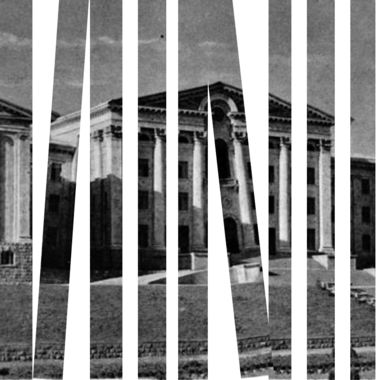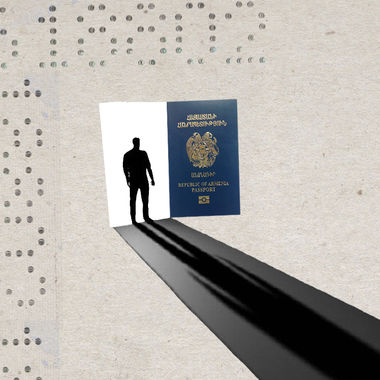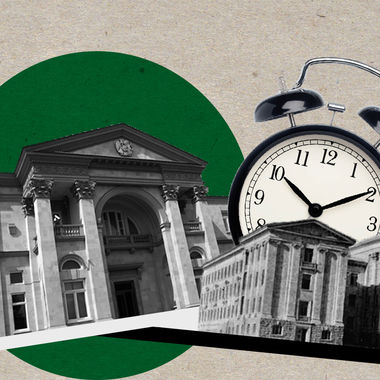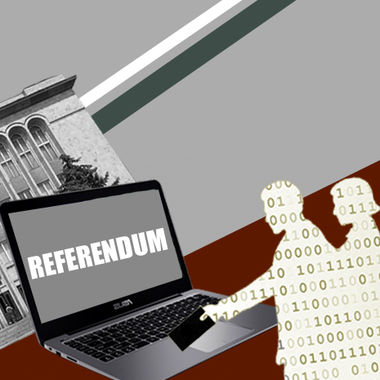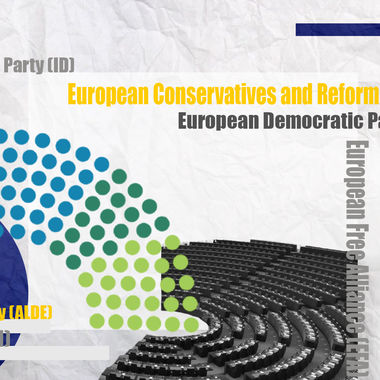Tue Dec 15 2020 · 7 min read
Direct Presidential Elections Undermine Stable Party Politics
By Harout Manougian , Fernando Casal Bértoa

chrupka
On November 29, 2020, at a meeting with representatives of the Armenian community in Moscow, President Armen Sarkissian was discussing the political situation in Armenia following the 2020 Artsakh War, when he made a very short comment with big implications: “I believe that, even if we remain a parliamentary country, the President should be elected directly by the people.”
Since regaining independence in 1991, Armenia has always had both a President and a Prime Minister. While this is a rare arrangement in the English-speaking world, it is actually very common in other democracies, particularly in Central and Eastern Europe. The division of powers between these two positions, with the President serving as head of state and the Prime Minister as head of government, can vary greatly from country to country.
On one end of the spectrum, the President of France exerts wide executive powers, especially when his (to date, they have all been men) party holds a majority in the National Assembly. However, as presidential and parliamentary elections are held separately, it is possible for the President and Prime Minister to be from different parties. When that happens, government decisions are subject to give-and-take compromises in an arrangement with its own name: cohabitation. The French model is thus called a semi-presidential system. It differs from the American fully-presidential model, which has no equivalent to the post of Prime Minister, and vests both the titles of head of state and head of government with a single individual.
On the other end, the President of Germany is not directly elected by the German people, but indirectly by the representatives of the Bundestag (the federal legislature) and the state legislatures. While all laws must still be signed by the President, by custom, this act holds only ceremonial significance. Even if they had previously been members of a political party, German Presidents are expected to insulate themselves from politics and serve as a unifying figure and national symbol. The real work of governing is left to the Chancellor (Germany’s counterpart to the post of Prime Minister), who is also not directly elected. In a parliamentary system of governance like Germany’s, it is the leader of the political party that controls the legislature (with or without a coalition with smaller parties) that gets to become Chancellor or Prime Minister, and effectively run the country.
In 2018, Armenia completed its transition from a semi-presidential system (like France’s) to a parliamentary one (like Germany’s), in accordance with constitutional changes that were passed through a referendum in 2015. The post of President remained, but it would no longer be filled through a direct election. Whereas previous Armenian executive presidents were subject to a limit of two five-year terms, the new role allows only a single (non-renewable) seven-year term. The President still formally signs bills into laws but no longer has a true veto; the only other option is to send the bill to the Constitutional Court for their opinion.
Article 125 of the Armenian Constitution spells out how the Armenian President is to be selected. Normally, a candidate would require a 75% supermajority of all MPs (whether they are present and voting or not) to vote in favor of their candidacy. This provision, along with a restriction on the President from being a member of a political party while in office, is meant to ensure the post is occupied by a non-controversial consensus builder, who will command the respect of all sides. If such agreement is not possible, however, a second round of voting is held, in which the candidate gaining a 60% supermajority becomes President. If no candidate meets that threshold, a third round of voting is held between the top two candidates from the second round, with a requirement to receive votes in favor from at least 50% of all MPs (whether they are present and voting or not). If even this level of support cannot be consolidated, the process repeats from the beginning within the next ten days.
The Perils of Direct Presidential Elections
In 1990, Yale Political Science Professor Juan Linz published a landmark article entitled “The Perils of Presidentialism,” arguing that presidential republics were more likely to experience democratic collapse than countries that used a parliamentary system. He provides a number of underlying causes for the effect. They include greater polarization of politics due to the single-winner nature of presidential elections, the personalization of politics reflected in support for or opposition to a charismatic individual, and the rigidity of fixed terms preventing the early ouster of a poorly performing leader, among others.
Linz focused on comparing presidential systems (like those of the United States and most Latin American countries) to parliamentary ones (more common in Europe and the former British Empire). In constitutional monarchies like the United Kingdom, Netherlands, Sweden, Canada and Japan, the parliamentary model comes naturally; the King or Queen maintains nominal authority but defers actual decision-making to elected representatives. For a republic to adopt a parliamentary system, however, a non-hereditary ceremonial President needs to stand in, as in Armenia, Germany, Italy and India.
The fact that a President doesn’t directly face the electorate greatly helps them stay above the political fray. If a republic’s president is directly elected (the correct academic term is actually “popular presidential elections” due to arrangements like the U.S. Electoral College), it is considered a semi-presidential republic, if a separate person holds the post of Prime Minister, or a fully presidential republic, if the president is both head of state and head of government. According to these criteria, the EU member states are classified as follows:
-
Constitutional Monarchies (no presidential elections): Belgium, Denmark, Luxembourg, Netherlands, Spain, Sweden
-
Parliamentary Republics (president not elected directly): Estonia, Germany, Greece, Hungary, Italy, Latvia, Malta
-
Semi-Presidential Republics (president elected directly): Austria, Bulgaria, Croatia, Czechia, Finland, France, Ireland, Lithuania, Poland, Portugal, Romania, Slovakia, Slovenia
-
Presidential Republics (president elected directly): Cyprus
While it is certainly possible to maintain a healthy democracy while still allowing for the direct election of a president, a deeper analysis, as published recently by the Armenian branch of the Friedrich Ebert Stiftung (FES) Foundation and using data from the Party Systems and Government Observatory of the University of Nottingham, shows that there are measurable impacts on polarization and party system institutionalization, both measures of public dissatisfaction with the democratic status quo. For example, the following is a rank order of the percentage of votes cast for anti-political-establishment parties (e.g. populist, nationalist, Communist, etc.) in different countries over the past several decades:
1. Italy (37.7%)
2. Cyprus (36.9%)
3. France (35.7%)
4. Greece (18.4%)
5. Finland (17.8%)
6. Austria (17.8%)
7. Portugal (16.9%)
8. Belgium (14.9%)
9. Netherlands (14.3%)
10. Spain (14.1%)
11. Luxembourg (14.0%)
12. Norway (11.3%)
13. Switzerland (9.6%)
14. Denmark (9.0%)
15. Germany (8.4%)
16. Ireland (7.3%)
17. Sweden (5.2%)
18. United Kingdom (3.4%)
19. Malta (0.7%)
Countries that hold direct presidential elections are shown in bold, noticeably skewing toward the top of the range. (A graph visualizing this data is available as Figure 1 on Page 4 of the FES report.) Higher levels of polarization indicate a willingness to overhaul the political system, which could threaten the country’s democratic foundation as it is cast into doubt.
Certainly, each country has its own unique factors that contribute to such polarization; it is not based on direct presidential elections alone. For that reason, it is useful to also compare data from the same country, before and after a change in government type.
When there have been such changes in European countries, the trend has typically been to move toward holding direct presidential elections. Such transitions have taken place in Austria (1952), Cyprus (1982), Czechia (2013), Iceland (1952), Ireland (1947), Slovakia (1998) and the German Weimar Republic (1925). Finland, Moldova and Portugal have actually transitioned back and forth more than once, providing a very useful data set. Applying the closure index, a measure of party system institutionalization, to the elections taking place over the different periods, we find that, in every case except one, the periods under direct presidential elections had lower party system stability (was more unpredictable). (A graph visualizing this data is available as Figure 2 on Page 5 of the FES report.) The only exception was Iceland, which presents a special case in that political parties play almost no role in presidential elections there.
These observations don’t suggest that direct elections for president inevitably lead to democratic collapse. However, they do indicate that direct presidential elections systemically impact a country’s democracy, particularly by inhibiting the institutionalization of political parties and party systems. The resulting perturbances create “windows of opportunity” for tectonic political shifts, which can stress democratic institutions sometimes to the point of collapse, if an authoritarian movement is able to capitalize on it. Parliamentary models that avoid national contests centered on the identity of individuals mitigate these stresses. By helping institutionalize political parties that outlast their leaders, they tend to turn focus toward policy goals that should be delivered, no matter who is in charge. Especially for democracies early in their transition away from authoritarian models, avoiding direct presidential elections can improve the system’s resilience and improve the chances of a better outcome.
A recent poll conducted by Gallup’s Armenian affiliate asked whether Armenia should return to its pre-2018 semi-presidential system of government. 32.6% of respondents were in favor of reverting back, 36.8% preferred to keep the existing parliamentary model, and 30.5% were not able to answer the question. We hope this background helps make the right answer to that question clearer.
also read
Early Elections Are Unlikely But Here Is What They Could Look Like
By Harout Manougian
Following Armenia’s major military defeat in Artsakh, many people in the country, including a number of political forces, are calling for the resignation of Prime Minister Nikol Pashinyan. Such a move could trigger a number of different scenarios.
Should Armenian Dual Citizens Be Banned From Running For Office?
By Harout Manougian
Dual citizens cannot run in Armenian parliamentary elections, but that hasn’t always been the case.
Belarus Was Sanctioned, Why Not Azerbaijan?
By Harout Manougian
Western countries imposed sanctions on Belarus’ Aleksandr Lukashenko for cracking down on democracy and attacking civilians. Ilham Aliyev has actually been more brutal but has not been penalized.
Armenia’s Entire Voter List is Available Online: Here’s What It Shows
By Harout Manougian
How common is your Armenian name? How many genocide survivors remain in Armenia? Which are Armenia’s largest cities? An analysis of Armenia’s voter list reveals the answers.
Armenia’s Moral Obligation to Enact Term Limits
By Harout Manougian
Exactly two years ago, MPs voted for Serzh Sargsyan to become Prime Minister and stay in office beyond his ten-year limit. That should never be allowed to happen again.
Did You Know Armenia Allows Internet Voting? (But It’s Only For Some)
By Harout Manougian
Internet voting introduces major risks but it is used by a small group of people in Armenian elections.
Armenian Political Parties’ Affiliations With Their European Counterparts
By Anna Barseghyan , Harout Manougian
Several political parties in Armenia are members of officially registered European political parties in the European Parliament. This affiliation offers an opportunity to deepen international cooperation and conduct parliamentary diplomacy.

